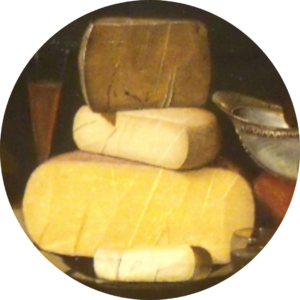History of Bordeaux Côtes de Bourg Wine
Introduction
The Bordeaux Côtes de Bourg wine region is an important and historic wine-producing area located on the right bank of the Gironde estuary in Bordeaux, France. Known for its rich history and distinctive red wines, Côtes de Bourg has developed a reputation for producing excellent value wines with robust flavors and aging potential.
Historical Overview
- Ancient Roots: Viticulture in the Côtes de Bourg area dates back to Roman times when the first vines were likely planted. The region’s wine production flourished due to its strategic location along the estuary, facilitating easy river transport.
- Medieval Expansion: During the Middle Ages, the area saw significant growth in vine cultivation, largely supported by the local monasteries.
- Modern Developments: In the 19th century, the phylloxera epidemic devastated the vineyards, leading to significant replanting and modernization of viticultural techniques. The 20th century brought further advancements with a focus on quality improvement and appellation regulation.
Important Regions and Appellations
- Côtes de Bourg Appellation: This is the primary appellation within the region. Established formally in 1936, it covers about 4,000 hectares. The appellation is renowned for its red wines, which constitute the majority of its production.
- Geography: Situated about 20 km from Bordeaux, the region is influenced by both its proximity to the Atlantic Ocean and its riverside location, which moderates the climate.
- Soil Composition: The terroir is diverse, consisting mainly of clay, limestone, and gravel, which contribute to the depth and complexity of the wines.
Key Grapes and Wine Characteristics
- Merlot: This is the predominant grape in the region, known for producing wines with rich, plummy flavors and a soft texture. Merlot-based wines from Côtes de Bourg are appreciated for their approachability and roundness.
- Cabernet Sauvignon and Cabernet Franc: These grapes add structure and tannin to the blends, imparting potential for aging and providing a backbone of complexity.
- Malbec: Also known locally as Cot, Malbec is used occasionally in blends to add spice and color intensity.
- Tasting Notes: Typical Côtes de Bourg wines are characterized by their deep color, full body, and aromas of dark berries, vanilla, and sometimes earthy undertones. The wines often have a good balance of acidity and tannins, which allows for aging potential.
Crus and Classification
Unlike some other Bordeaux regions, Côtes de Bourg does not have a formal classification system for its châteaux. However, several estates have gained recognition for their high-quality production.
Presence in the USA
- Market Reception: Côtes de Bourg wines are appreciated in the U.S. for their value and quality. They are often marketed as affordable alternatives to more expensive Bordeaux wines.
- Distribution and Availability: These wines can be found in both specialty wine shops and larger retail chains, catering to consumers looking for budget-friendly Bordeaux options.
- Consumer Perception: American consumers often recognize Côtes de Bourg wines for their robustness and suitability for pairing with a wide range of foods, particularly meats and hearty dishes.
Conclusion
The Bordeaux Côtes de Bourg region, with its rich history and strategic geographical advantages, continues to produce red wines that are both high in quality and accessible in price. The area’s focus on traditional grape varieties and commitment to quality make it a notable part of the Bordeaux wine landscape, and its products maintain a steady presence in the international and American markets.
Here is a detailed table of tasting notes for Bordeaux Côtes de Bourg wine, covering various aspects from body to aging influences:
| Aspect | Description |
|---|---|
| Body | Full-bodied |
| Acidity | Medium to medium-high |
| Sweetness | Dry |
| Tannins | Medium to high |
| Alcohol | Typically around 13-14% ABV |
| Grape Flavours | – Merlot: Dark fruits (plums, black cherries), hints of chocolate |
| – Cabernet Sauvignon: Blackcurrant, green bell pepper, tobacco | |
| – Cabernet Franc: Red fruits, vegetal notes, and a touch of spice | |
| – Malbec: Dark berries, black pepper, sometimes a floral hint | |
| Impact of Flavouring Techniques | |
| – Oak Flavouring | Common: Adds vanilla, toast, and cedar notes. Used to enhance complexity and structure. |
| – Malolactic Conversion | Common: Softens acidity, adding buttery notes and a smoother texture. |
| – Lees Aging | Less common: Can impart creaminess and subtle yeasty flavors when used. |
| Flavours Arising from Aging | |
| – Short-term Aging | Fresh fruit flavors mellow, and secondary notes of leather and forest floor may develop. |
| – Long-term Aging | Complex tertiary flavors including tobacco, mushroom, and earthy notes emerge. Tannins soften and integrate well. |
This table captures the typical profile of Bordeaux Côtes de Bourg wines, focusing on how the characteristics evolve with vinification techniques and aging.
Bordeaux Côtes de Bourg wines, with their robust flavors and structured profiles, are excellent for pairing with a variety of foods. The following are some recommendations for pairing these wines with both local dishes and cheeses.
Food Pairings
- Red Meat Dishes: The full body and firm tannins of Côtes de Bourg red wines make them ideal partners for red meats. Think classic Bordeaux pairings like steak, lamb, and duck, where the richness of the meat complements the robust nature of the wine.
- Game and Poultry: Heavier poultry dishes, such as roasted turkey or goose, and game meats like venison or wild boar, pair beautifully with the earthy notes and depth of these wines.
- Hearty Stews and Casseroles: Dishes such as “Lamproie à la Bordelaise” (lamprey cooked in red wine) or a rich beef stew will match well with the wine’s tannic structure and fruity undertones.
- Grilled and Smoked Foods: The smoky flavors of grilled meats or smoked sausages can enhance the wine’s inherent characteristics, creating a delightful harmony.
Cheese Pairings
Pairing Côtes de Bourg wines with cheese involves selecting varieties that can stand up to the wine’s robustness without overpowering it. Here’s how they match with local and general cheese types:
- Local Cheeses:
- Ossau-Iraty: This cheese from the Pyrenees, not too far from Bordeaux, is a firm sheep’s milk cheese that pairs well with the full-bodied nature of Côtes de Bourg. Its rich, nutty flavor complements the wine’s tannic structure and dark fruit notes.
- Camembert de Normandie: While not local to Bordeaux, its creamy texture and earthy flavors can be a good match for a Côtes de Bourg, particularly those wines that have seen some oak aging.
- General Cheese Pairings:
- Aged Gouda: The sweet, caramel-like richness of aged Gouda can stand up beautifully against the robustness of Côtes de Bourg.
- Blue Cheeses: The intense flavors of blue cheeses like Roquefort or Gorgonzola will complement the bold flavors in the wine, especially if the wine has developed some tertiary notes through aging.
Considerations
- Balancing Intensity: The key to pairing is to match the intensity of the food with the intensity of the wine. Côtes de Bourg wines, with their pronounced flavors and medium to high tannins, require dishes or cheeses that have a similar level of flavor intensity.
- Counterbalancing Tannins and Fat: The tannins in Côtes de Bourg reds are softened by the fat in richer meats and creamy cheeses, creating a balanced and pleasant eating and drinking experience.
Overall, Bordeaux Côtes de Bourg wines are versatile with a range of rich, hearty dishes and assertive cheeses, making them excellent for gastronomic explorations centered on local Bordeaux cuisine.
Bordeaux Côtes de Bourg wines, primarily crafted from Merlot, Cabernet Sauvignon, and Cabernet Franc (often with additions of Malbec), showcase characteristics influenced by their specific terroir. The taste of these wines can vary significantly when compared to other regions both locally within Bordeaux, nationally across France, and internationally. Here’s a comparative analysis of how Côtes de Bourg wines differ from others made from the same grape varieties:
Local Variations within Bordeaux
- Côtes de Bourg vs. Pomerol and Saint-Emilion (other right bank areas):
- Merlot Dominance: Like Côtes de Bourg, these areas also focus on Merlot. However, Pomerol and Saint-Emilion wines generally have a higher complexity, smoother tannins, and often a more pronounced oak influence, leading to richer and more velvety textures. Côtes de Bourg wines might be a bit more rustic and robust in comparison, with a stronger emphasis on earthy and spicy notes.
- Price Point: Côtes de Bourg typically offers more affordable wines compared to the often premium-priced offerings of Pomerol and Saint-Emilion.
- Côtes de Bourg vs. Médoc (left bank area):
- Grape Composition: Médoc wines are more dominated by Cabernet Sauvignon, offering a sharper tannin profile and higher acidity, with flavors leaning towards dark fruits and often more prominent cedar and graphite notes. In contrast, the Merlot dominance in Côtes de Bourg provides a softer, plusher mouthfeel with juicier plum and cherry flavors.
National Variations Across France
- Bordeaux vs. Languedoc-Roussillon:
- Languedoc-Roussillon, while using similar grape varieties, produces wines that are generally fruitier and more immediately approachable with less emphasis on aging. The Mediterranean climate results in higher alcohol content and riper fruit flavors compared to the more balanced and structured style of Bordeaux Côtes de Bourg.
International Variations
- France (Bordeaux) vs. USA (California – Napa Valley):
- Napa Valley wines, particularly those from Cabernet Sauvignon, tend to have higher alcohol levels, more intense ripe fruit flavors, and significant oak influence. They are usually bolder and more opulent than the typically more restrained and terroir-driven style of Côtes de Bourg.
- France (Bordeaux) vs. Italy (Tuscany – Super Tuscans):
- Super Tuscans often blend Sangiovese with Bordeaux varieties like Merlot and Cabernet Sauvignon. These wines can be quite bold and structured but typically exhibit a distinct Italian flair with tart cherry, earth, and herbaceous notes, which contrasts with the darker fruit and earthy profile of Côtes de Bourg.
- France (Bordeaux) vs. Chile (Central Valley):
- Chilean wines using Bordeaux varieties often showcase more overt fruitiness, with a brighter expression of red and black fruits, sometimes accompanied by a notable pepper spice. These wines are generally softer and less tannic compared to the structured and sometimes austere nature of Bordeaux wines, including those from Côtes de Bourg.
The varied expression of Bordeaux Côtes de Bourg wines in comparison to other regions is a testament to the unique microclimates, soil types, and winemaking traditions that influence the profile of wines globally. The differences underscore the significance of terroir and regional winemaking practices in shaping the character of wines made from the same grape varieties.


